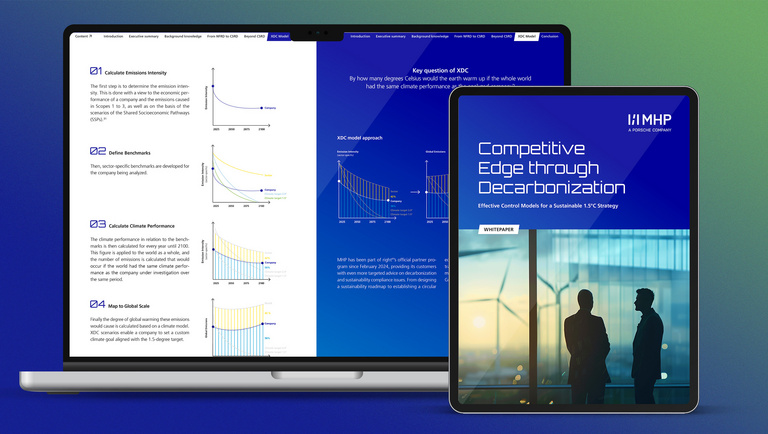

- Whitepaper
Competitive Edge through Decarbonization
Effective Control Models for a Sustainable 1.5°C Strategy
The world is faced with the challenge of limiting global warming to a maximum of 1,5 degrees Celsius. But how can companies make their contribution?
In view of this global goal, the European Union has taken clear measures with the European Green Deal: EU member states should be climate-neutral by 2050. But what is the current status in the corporate world?
According to CDP, an international non-profit organization, 49 percent of European companies have climate protection plans that are geared towards the 1.5 degree target, but the challenge lies in how these plans are actually implemented. So far, only five percent can show how they intend to achieve these goals. However, the consequences for companies that fail to do so are clear: fines in the millions are imminent.
Against the backdrop of the massive expansion of reporting obligations from 11,600 to around 49,000 companies in the EU and the stricter requirements of the CSRD, it is clear that companies are challenged more than ever to find the right strategies and solutions.
This is exactly where our white paper comes in: It presents innovative concepts and solutions that support companies in achieving their goals within the framework of the 1.5-degree target. We also present the XDC approach, a unique method that companies can use to precisely align their sustainability measures and decarbonization processes.
Central Questions in the Whitepaper:
- Why does decarbonization play an important role?
- Which corporate areas emit CO2?
- What are the particular challenges of Scope 3 emissions?
- Why is the SBTi standard not enough?
- Which companies are affected and when?
- What are the new standards and formats?
- What does double materiality mean?
- How exactly does corporate sustainability pay off?
- How can companies monitor and manage their CO2 emissions?